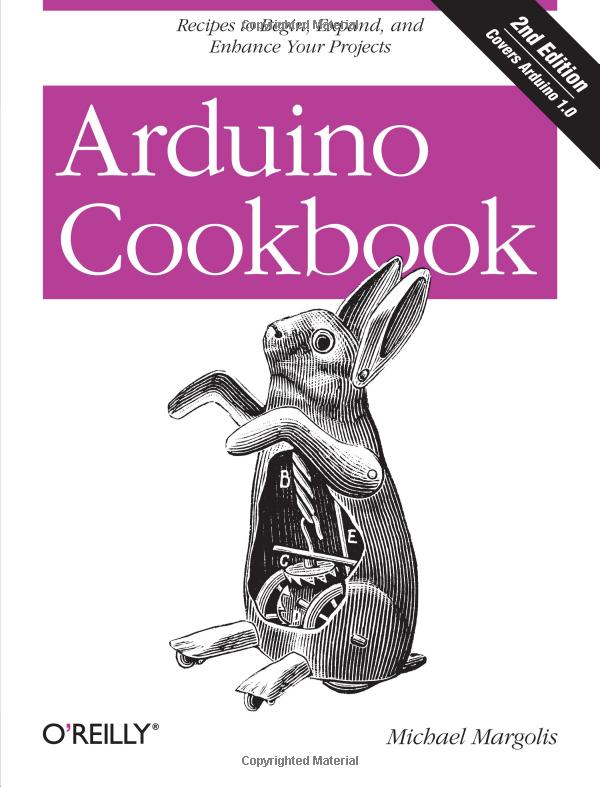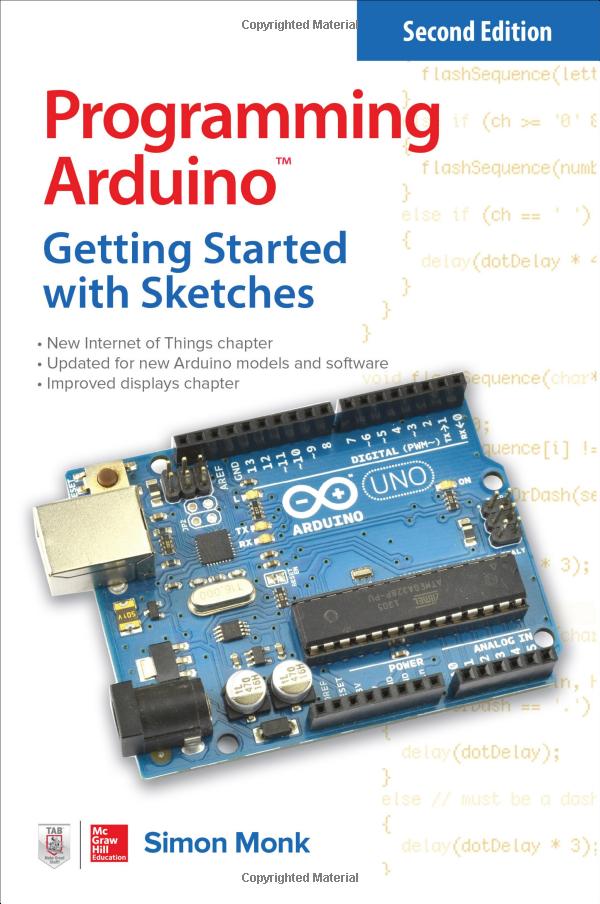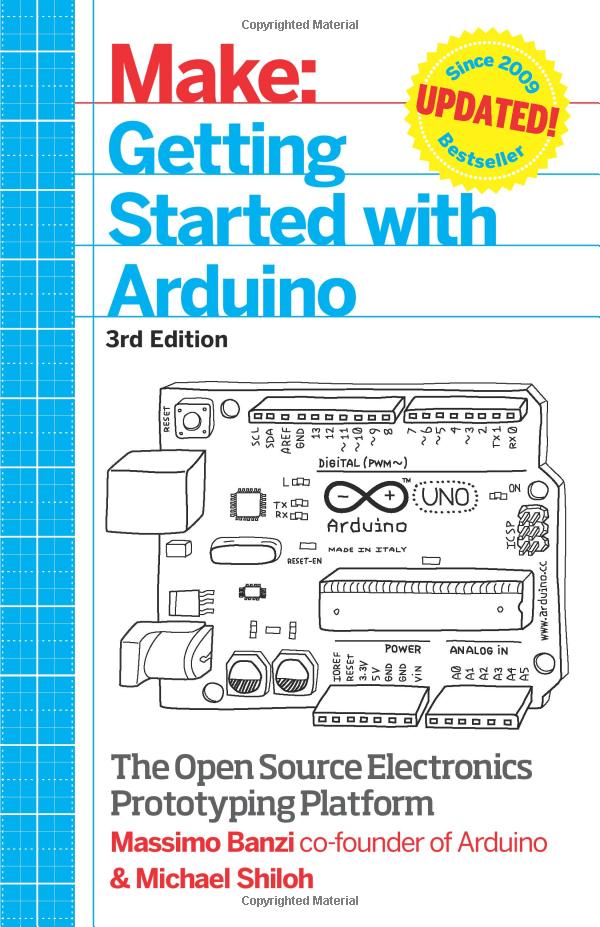Best Arduino Books for Beginners
A great beginner’s books on Arduino can really jump start your journey into electronics, but a truly amazing book is one that you’ll keep on your workbench for years - showing its age through flux stains, solder burn marks, and dogeared pages.
At a Glance
To understand Arduino, you’ll need to understand both the Hardware and Software aspects of it. The hardware aspect involves learning how to build the physical circuits that connect all of your components together. The software aspect involves writing the code that runs on your Arduino’s processor, which controls the connect hardware circuits.

Arduino Cookbook
Hardware Introduction:
Software Introduction:
Reference Value:
An excellent choice for beginners. This book continues to deliver value as an excellent reference book to have on your bench.

Programming Arduino: Getting Started with Sketches
Hardware Introduction: Not Applicable
Software Introduction:
Reference Value:
This book focuses solely on the software side of Arduino, which it does an incredible job of covering, and it continues to find use as a reference book.

Make: Getting Started with Arduino
Hardware Introduction:
Software Introduction:
Reference Value:
Given it's low price, this book can offer a solid introduction to those on a budget. It doesn't have the lasting power of the other books on this list, however it's not a bad starting point for your adventure into the world of Arduino.
In-depth Reviews
1. Arduino Cookbook
The Arduino Cookbook is targeted firmly at beginners to both coding and electronics, and it really shines with that group.
The first 20 pages or so are dedicated to getting the necessary software installed on your computer and other basics like that.
Next, the book spends about 60 pages giving you the basics of coding for Arduino. They cover everything from performing basic mathematical operations, looping constructs, and type coercion, all the way up to more advanced concepts like bit shifting.
With the basics of coding out of the way, the book next tackles serial communication with your computer. Serial communication is one of the best ways to figure out why something isn’t working the way you expect it to (debugging), so this is an excellent topic to get a solid understanding of at this point in your journey.
The remaining 200 pages of the book are dedicated to working with increasingly difficult inputs and outputs from the Arduino to connected sensors and actuators. Some examples of the topics covered in this section of the book are:
- Basic Digital and Analog I/O
- Detecting light and motion
- Reading RFID
- Detecting location with GPS
- Interpreting motion with Gyroscopes
- Servos, Solenoids, Steppers, DC Motors
- Audio outputs
- Reading infrared signals
- Writing to LCDs
- I2C, SPI, and ethernet communication
- Advanced coding concepts
- and a whole lot more!
This book offers an excellent introduction, a clear path to advancing your skills, and it can work as a reference to working with many different components.
We highly recommend this book, not only to beginners but also more advanced users, because of this.
2. Programming Arduino: Getting Started with Sketches
So, you already have a basic understanding of digital electronics and you’re looking to get a solid foundation in the programming aspect of Arduino? Well, look no further! This book focuses heavily on the coding aspect of Arduino.
The first 25 pages are dedicated to the basics of getting a working programming environment set up and getting your code deployed to the Arduino.
With that out of the way, the book spends the next 60 pages covering the basics of the C programming language: variables, conditionals, looping constructs, functions, arrays and strings.
Following that you’ll dive into basic digital and analog I/O including debouncing techniques, pull up and pull down resistors, and more.
The book then explores the functionality includes in the Arduino standard library. You’ll cover topics such as tone generation, interrupts, shift registers, bit manipulation techniques and there’s even an entire chapter dedicated to working with EEPROM for persistent storage of values on board the Arduino device.
There are also chapters on working with LCD displays, internet and IOT functionality like interacting with web services and even coding and running a basic web server on your Arduino.
We highly recommend this book to people with some electronics experience that are looking to level up in the software related aspects of Arduino.
3. Make: Getting Started with Arduino
This book is, for better or worse, the de facto introductory book to Arduino. It’s co authored by Massimo Banzi, the co-founder and beloved face of Arduino, and is a best seller in the category on Amazon.
The first 40 pages of the book targets complete beginners to both electronics and programming. A large portion of the book is dedicated to explaining the basics, such as:
- What is Arduino?
- How do you install the necessary software on your computer?
- What is electricity?
- What is circuit bending?
- What’s a sensor?
- What’s an actuator?
After that, the book spends about 30 pages walking you through building some basic circuits such as blinking an led, using buttons, measuring light with photoresistors, and serial communication.
At this point, the book begins using an Arduino Leonardo. The Leonardo board has extra inputs and outputs (you can connect more stuff to it), and it uses different processor. Eventually, the Leonardo should be cheaper than the UNO, but due to higher volume sales of the Uno clones it just isn’t there yet.
The remainder of the book is dedicated to building a cloud connect irrigation system (wat?). Overall, it feels like the book goes from 0 to 60 after about 70 pages into it.
While the first half of the book is a great introduction, this book does not have the staying power to be something you’re referencing a year from now, and the sample projects increase in difficulty very rapidly.
Overall, this book offers an excellent introduction to the world of Arduino in the first half of the book. However, due to the rapid increase in difficulty and limited hands on work this book is not going to give you a lot of mileage, and it doesn’t act as a good reference book as your skills become more advanced.